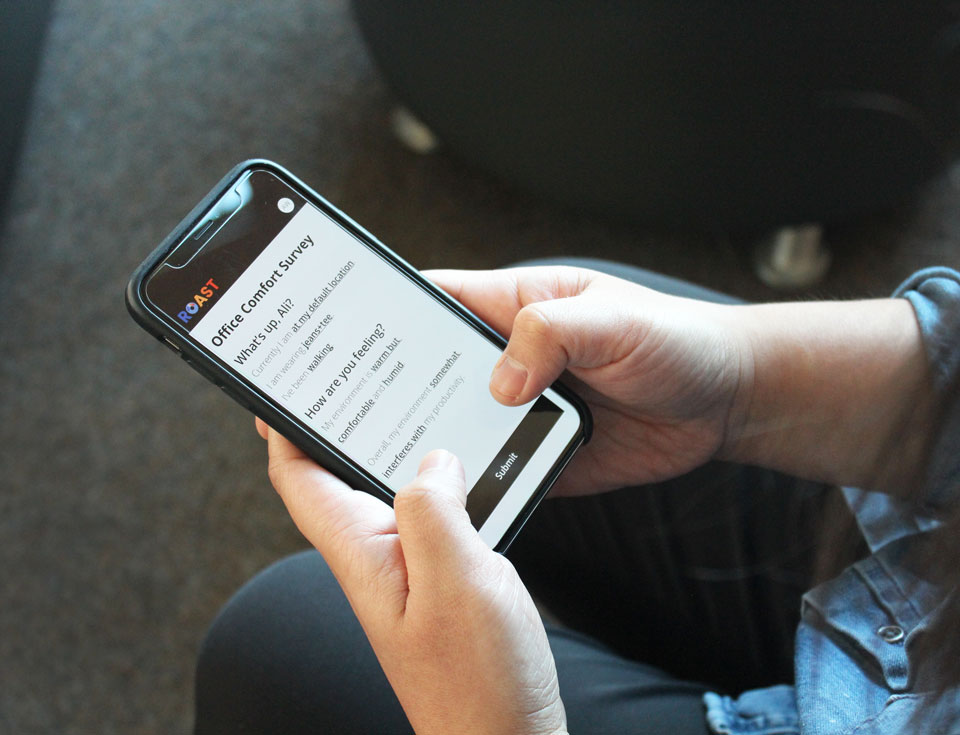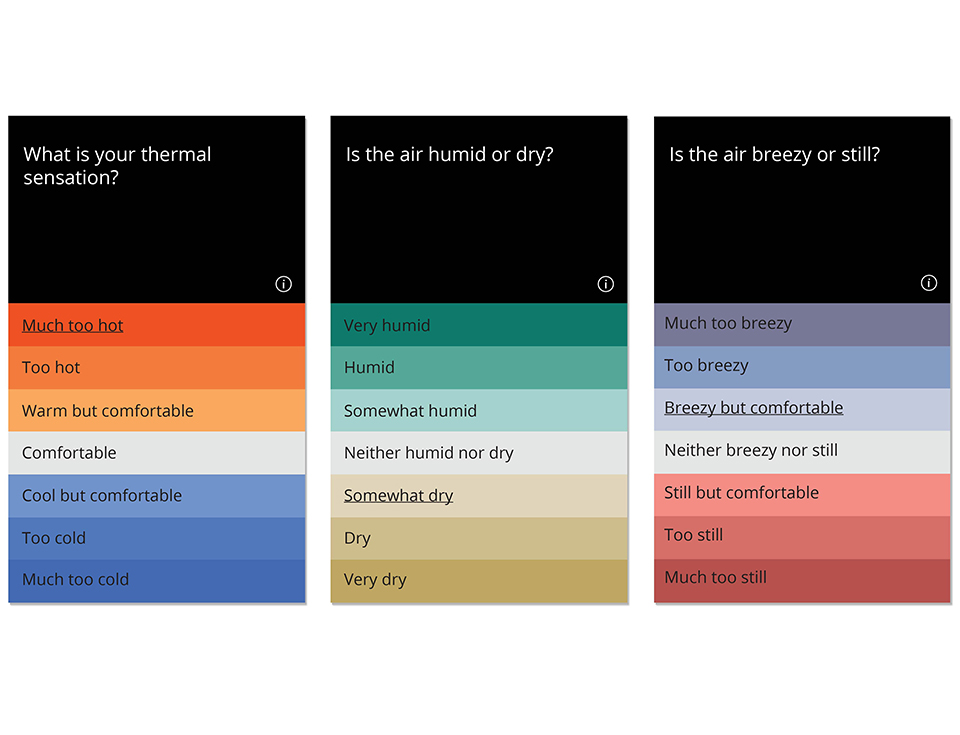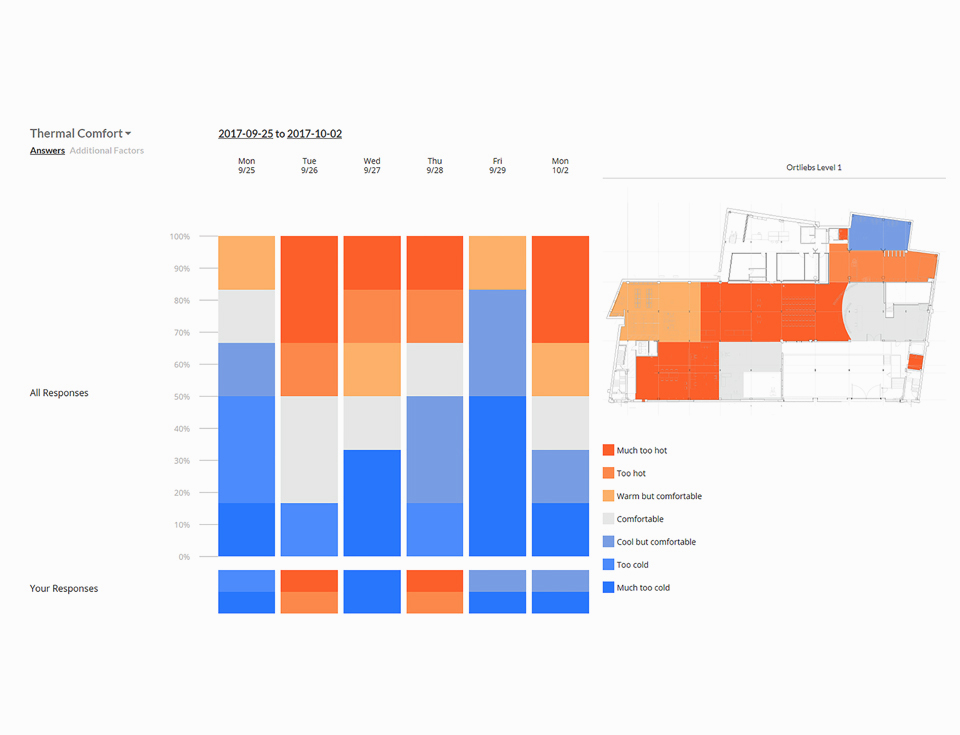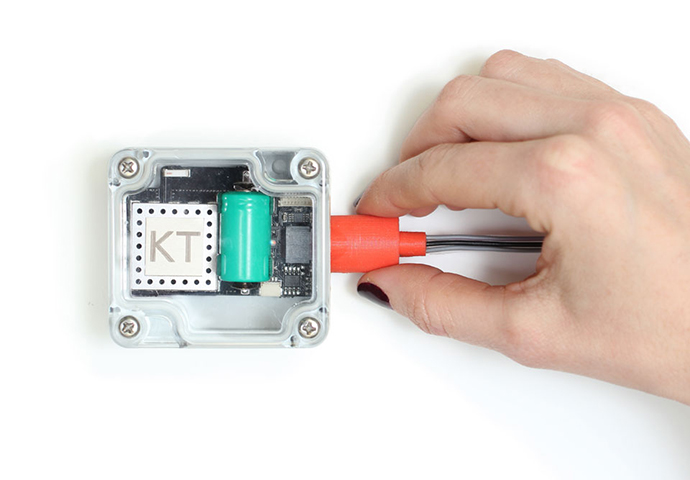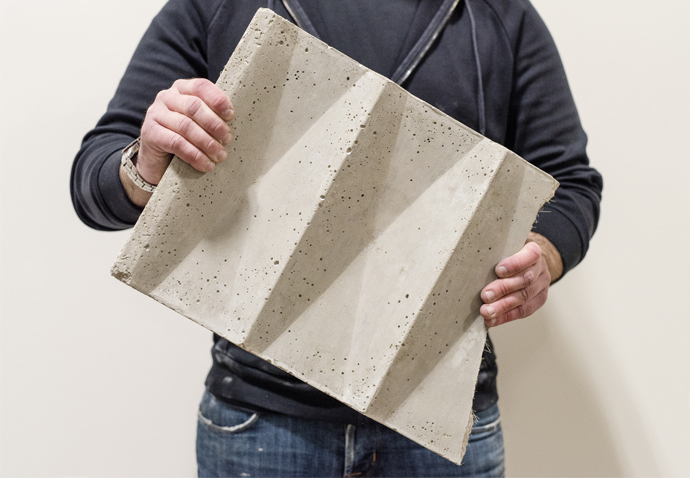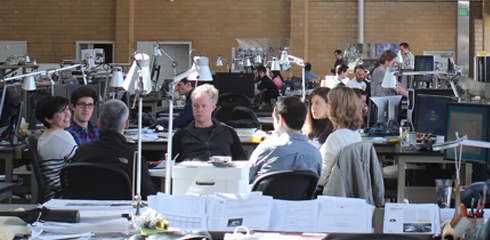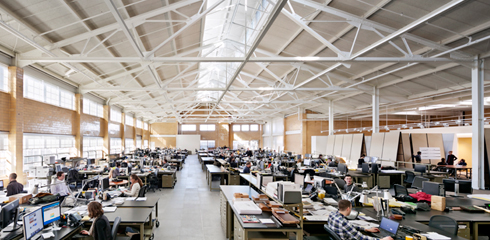Tech Preview: Roast
Roast is a web-based comfort survey app that lets architects, owners, and building managers create, administer, and analyze occupant comfort surveys.
Three months after architecture writer Witold Rybczynski outlined our journey to achieve passive comfort amidst Philadelphia's hot, muggy summers, we are proud to announce that Roast, the latest software application development project from KT Innovations, has been officially released for external beta testing.
Designed to ease the process of conducting post-occupancy evaluations, Roast is a web-based survey app that captures how people experience their space. Created with ASHRAE standards in mind, Roast measures comfort using a range of factors including temperature, humidity, personal activity level, air quality and movement, and visual and auditory stimulation. Survey administrators can include any or all of these questions in customized surveys and can filter and analyze results directly in the app. Since responses are tied to each participant's location, Roast also helps identify trends and pinpoint improvements.
To learn more, visit the Roast website or check out Architect magazine tech editor Wanda Lau's article highlighting Roast's development and functionality in anticipation of a commercial release.
Background
Roast began with an experiment we conducted on ourselves.
When we transformed a mid-century industrial building into our studio, we wanted to reduce our energy use as much as possible. That meant adding insulation, replacing the windows and roof, relying more on natural light, and installing efficient mechanical systems. When it came to air conditioning, we stopped short. Our naturally-ventilated building was designed to stay cool before the advent of air conditioning, so why not put its strategies to the test?
We hypothesized that natural ventilation, dehumidification, and the building's concrete thermal mass would maintain comfortable temperatures in the studio. At night, we purged warm air from the building and replaced it with cooler outside air. To test its effectiveness, we installed nearly 400 temperature and humidity sensors throughout the studio to measure the precise temperature and humidity of the floors, windows, walls, and air. We then compared the data gathered from these sensors to outside temperature and humidity levels recorded from the weather station installed on our roof.
Currently in beta, the latest version of Roast includes 16 potential questions, the answers to which are summarized in a dashboard in the app.
To tie those data points to human feedback, we released office-wide surveys that asked people how they were feeling (“too hot,” “warm but comfortable,” “neutral,” etc.), where in the office they were located, and what they were wearing to understand which factors contributed most to their comfort.
The survey responses sparked many improvements and interventions such as adding floor fans, relaxing the office dress code, and creating an air conditioned “Cool Room” for those seeking extra relief. And, after collecting numeric and human comfort data over three seasons, we added a cooling system to keep us comfortable on the hottest days.
Roast gathers participant data and places it on a building's floorplan so that administrators can determine trends and make informed improvements.
We continue to use Roast surveys in conjunction with sensor data to determine setpoints and operational modes that keep everyone in our 120-person studio comfortable. Encouraged by our experiment's success, our affiliate company, KT Innovations, continued its development for broader use by adding more questions, designing an intuitive interface, and streamlining the survey creation process, a process that resulted in a completely unique post-occupancy survey app.



